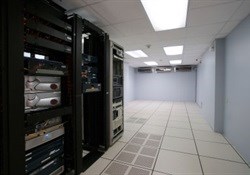
Schneider Electric's Data Centre Science Centre senior research analysts, Paul Lin and Victor Avelar, together with the Schneider Electric's global product director responsible for prefabricated modular data centre cooling solutions, John Nieman, have put together a paper for existing data centres that investigates the constraints, reviews all available containment methods, and provides recommendations for determining the best containment approach.
The paper, "Implementing hot and cold air containment in existing data centres", states that containment, in general, provides the following important benefits for an existing data centre:
There are two methods for deploying containment. "Hot air and cold air containment are the two high-level methods for an air-management strategy, and both of them provide significant energy savings over traditional, uncontained configurations. Which type of air containment is a better choice for existing data centres?" ask Lin, Avelar and Nieman. "In reality, the best containment type will largely depend on the constraints of the facility. Some IT managers will have a choice between two or more types, while others may be restricted to a single type of hot or cold air containment due to physical constraints."
The paper reveals that an assessment of the existing conditions of the facility is essential to choosing the right containment solution for a given data centre and should be done in advance. During an assessment, constraints are noted. Constraints are obstacles that cannot be overcome, or can only be changed at great expense or with unacceptable consequences. For example, raising the existing data centre ceiling height is not realistic and is considered as a constraint. The containment may lead to the failure of existing fire detection and/or suppression system, which is an unacceptable consequence and is also considered as a constraint. Each constraint must be examined to determine its effect on the containment deployment, and whether it is worth the financial cost or other negative consequence of removing it.
For complex projects, an expert review is essential in order to check the cost or other consequences of constraints, which end-users may not be aware of. "Existing facilities have various constraints that are dictated by circumstances and which are not under the control of the customer. Constraints include facility limitations, regulatory limitations, or unchangeable business requirements," add Lin, Avelar and Nieman.
Some examples of these constraints include IT equipment arrangement, ceiling height, raised floor plenum depth, column location, cabling and air distribution type.
Lin, Avelar and Nieman highlight that assessing the facility constraints, reviewing all potential solutions, and selecting the right containment hardware should determine the best approach for a specific deployment.
They conclude that cold aisle containment is preferred for the facilities with raised floor as a supply air plenum, while ducted hot aisle containment is preferred for facilities with a drop ceiling as the hot air return plenum. For data centres with existing row-based cooling units, row-cooled hot aisle containment is preferred. Other containment solutions will be selected by unique requirements.